Category: Carnatic Music
-
The Ethical Vegan Mridangam
I had the opportunity to interview Dr. K. Varadarangan, creator of the SRI mridangam, for Sruti magazine. Sourcing it from the Sruti magazine blog below: The Ethical Vegan Mridangam By R. Ramkumar In his path breaking work in the field of Carnatic percussion, Dr. K. Varadarangan, a Bengaluru-based vocalist,…
-

V Sanjeev for Saraswathi Vaggeyakara Trust, Chennai
Organizer: Saraswathi Vaggeyakara Trust Venue: Narada Gana Sabha Mini Hall Violin: V. Sanjeev Mrudangam: Patri Satish Kumar Khanjira: K.V. Gopalakrishnan 1) evari bOdhana (varNam) – AbhOgi 2) praNamAmyaham – gauLa (OS) 3) sArasamukhi – gauDamalhAr (AS) 4) sAmagAnalOla – citrAmbari (A) 5) mama hridayE – rItigauLa (A) 6) shambhO sadAshiva…
-
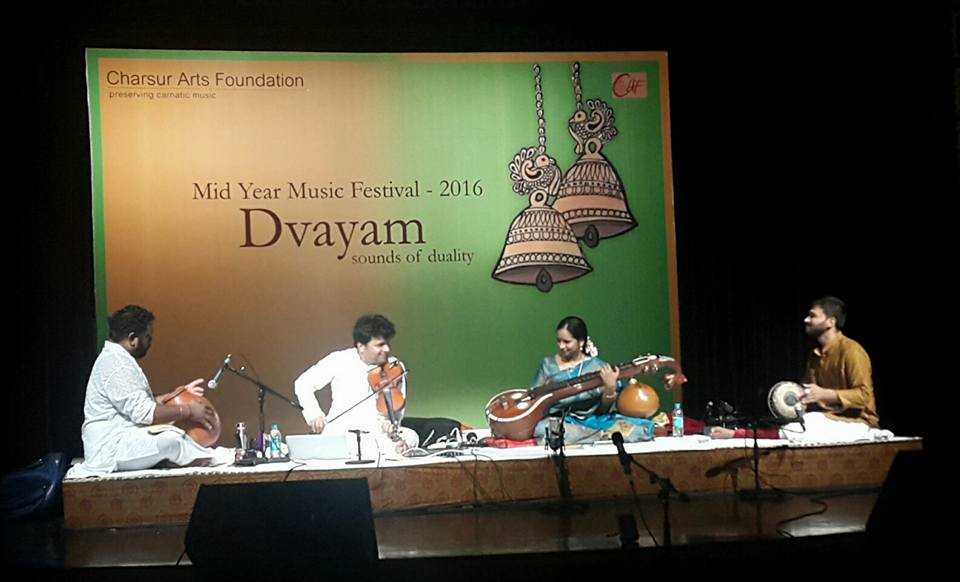
Kumaresh and Jayanthi for Charsur Arts Foundation
Kanada and kalyani melting the hearts. So much melody! Such great mastery over their instruments! Kumaresh, Jayanthi Kumaresh, Anantha R. Krishnan and Trichy Krishnaswamy for Charsur Arts Foundation’s mid-year music festival Dvayam at Rukmini Arangam, Kalakshetra, Chennai.
-
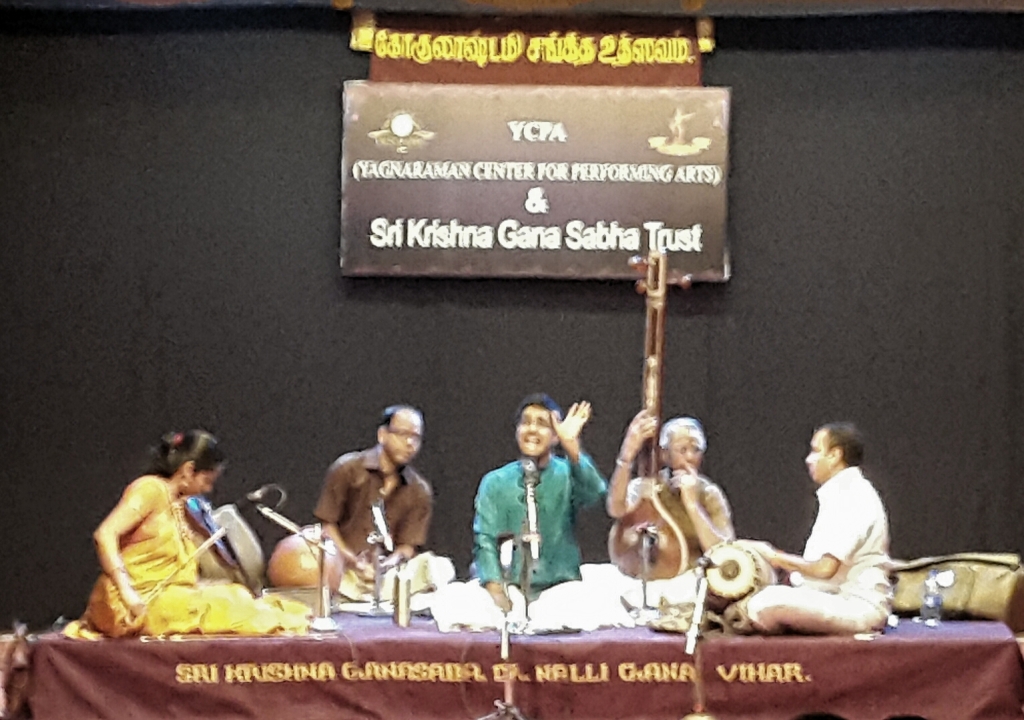
Abhishek Raghuram at Sri Krishna Gana Sabha, Chennai
Organizer and venue: Sri Krishna Gana Sabha, Chennai Vocal: Abhishek Raghuram Violin: Akkarai Subbulakshmi Mrudangam: R. Sankaranarayanan Ghatam: N. Guruprasad List of songs: 1) eduTa nunnADu – bhujangini (O) 2) pAlayamAm – kannaDA (AS) 3) gAnamUrtE – gAnamUrti (AS) 4) santAnagOpAlakrishnam – khamAs (ANST) 5) bAlagOpAla – bhairavi (ANST) 6)…
-
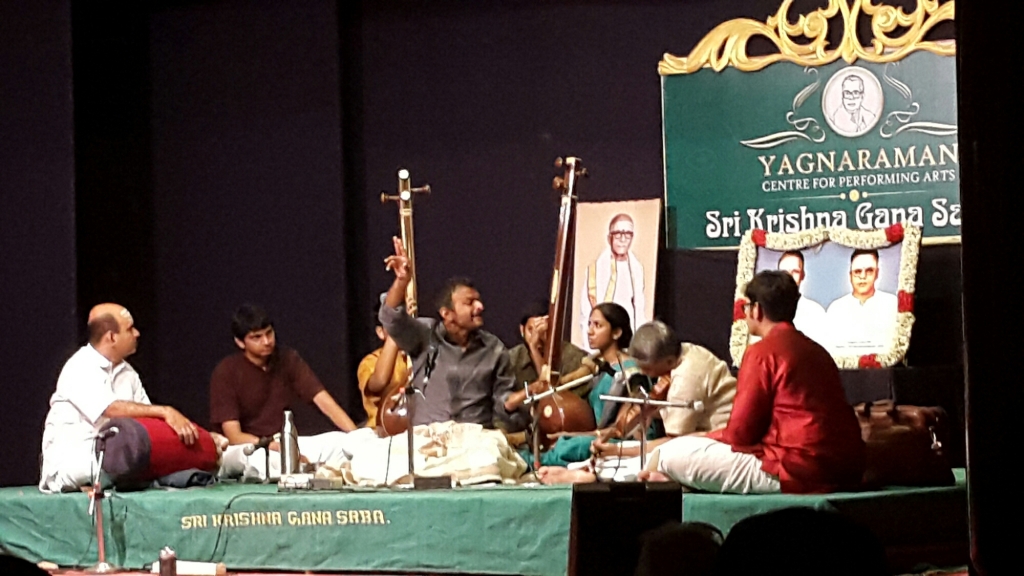
TM Krishna for Alathur Subbaiyer Centenary, Chennai
I finished my concert and reached late as the first song nAma kusumamula was ending. Occasion: Alathur Subbaiyer Centenary Celebrations Venue: Sri Krishna Gana Sabha, Chennai Vocal: T.M. Krishna Violin: R.K. Shriramkumar Mrudangam: Manoj Siva Khanjira: Anirudh Athreya List of songs: * nAma kusumamula – shrI (NS) * E pApamu…
-
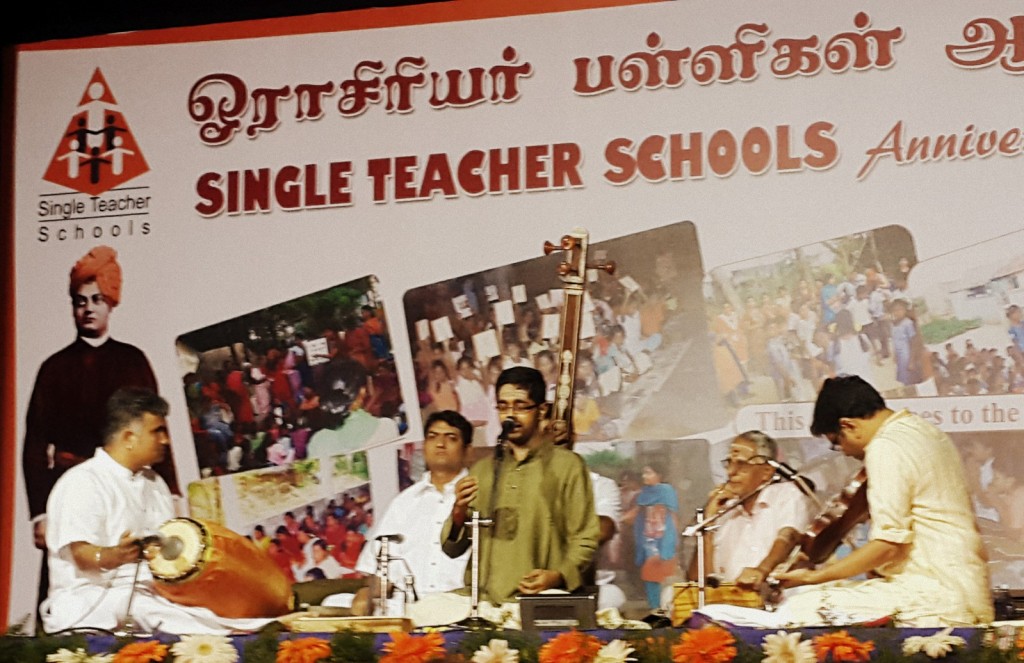
Abhishek Raghuram for Single Teacher Schools in Chennai
Concert in aid of Single Teacher Schools. Kudos to Abhishek for not only performing for free but also collecting and donating for the cause!!! Organizer: Single Teacher Schools Venue: Vani Mahal, T. Nagar, Chennai Vocal: Abhishek Raghuram Violin: B.U. Ganesh Prasad Mrudangam: Trivandrum Balaji Khanjira: K.V. Gopalakrishnan List of songs:…
-
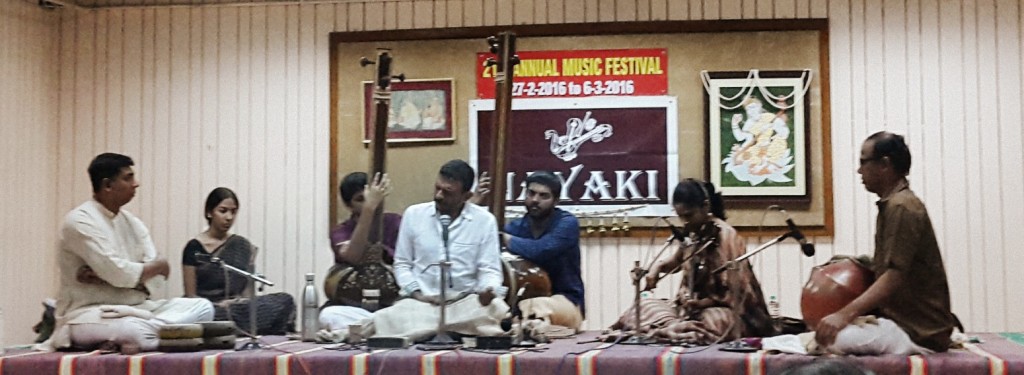
TM Krishna for Nayaki, Chennai
Organizer: Nayaki Venue: Abirami Chidambaram Community Hall, Kotturpuram, Chennai Vocal: T.M. Krishna Violin: Akkarai Subbulakshmi Khanjira: B.S. Purushotham Ghatam: N. Guruprasad List of songs: * badalika dhIrA – rItigauLa (ANS) * rAmA nI pai – kEdAram (tS) * dhanyAsi (A by violin) * paridAnamicitE – bilahari (AS) * paripOvalerA –…
-
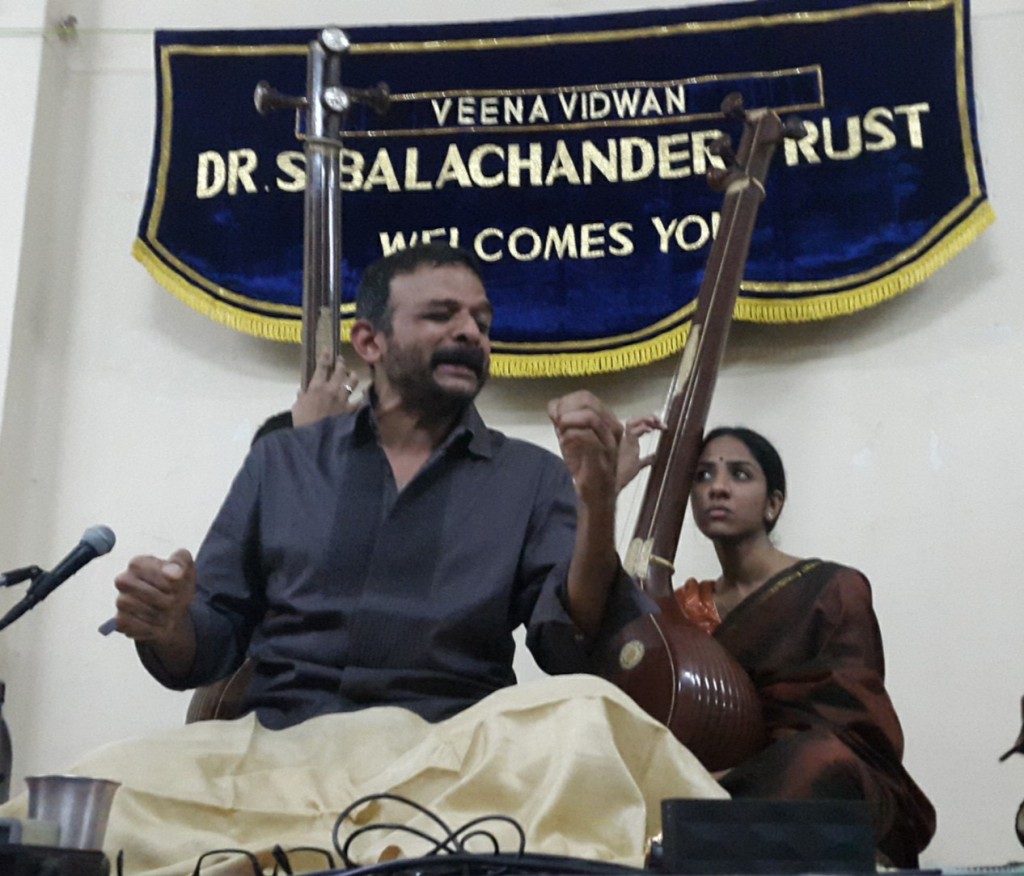
TM Krishna for Dr S Balachander Trust, Chennai
What an experience! Still in a trance more than an hour after the concert got over. The joy of experiencing TMK’s music in a mic-less concert at such close quarters! Organizer: Dr. S. Balachander Trust Venue: Sastri Hall, Mylapore, Chennai Vocal: T.M. Krishna Violin: Akkarai Subbulakshmi Mrudangam: Manoj Siva Khanjira: Anirudh…
-
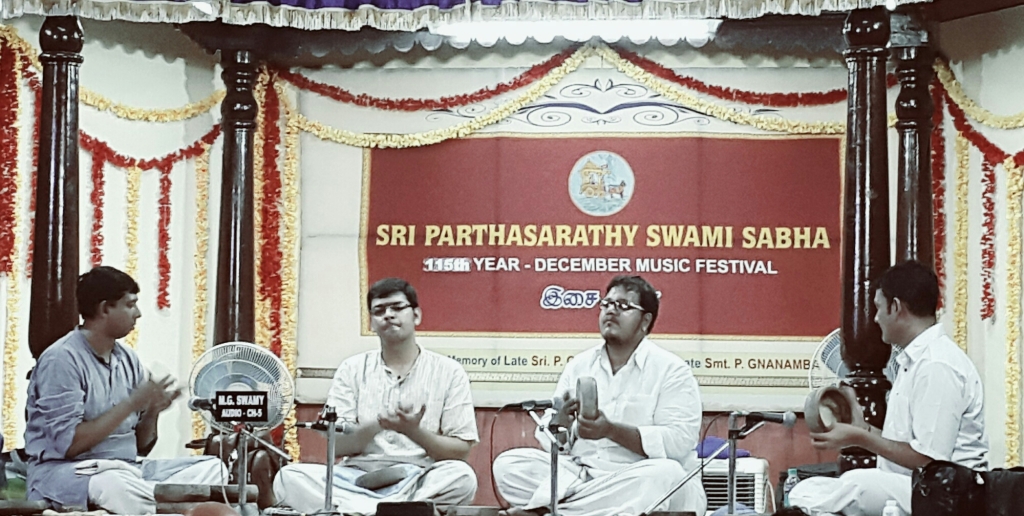
Laya chatura – Kanjira Quartet in Chennai
Kanjira quartet magic today at the Parthasarathy Swami Sabha. First B.S. Purushotham and Anirudh Athreya played a 88 count talam (kanDa triputa with the each beat of lagu substituted by tisra, catusra, kanDa, misra and sankIrNa and dhrutam in 2 kalais). They played all 5 nadais. Then Shree Sundarkumar and…
-
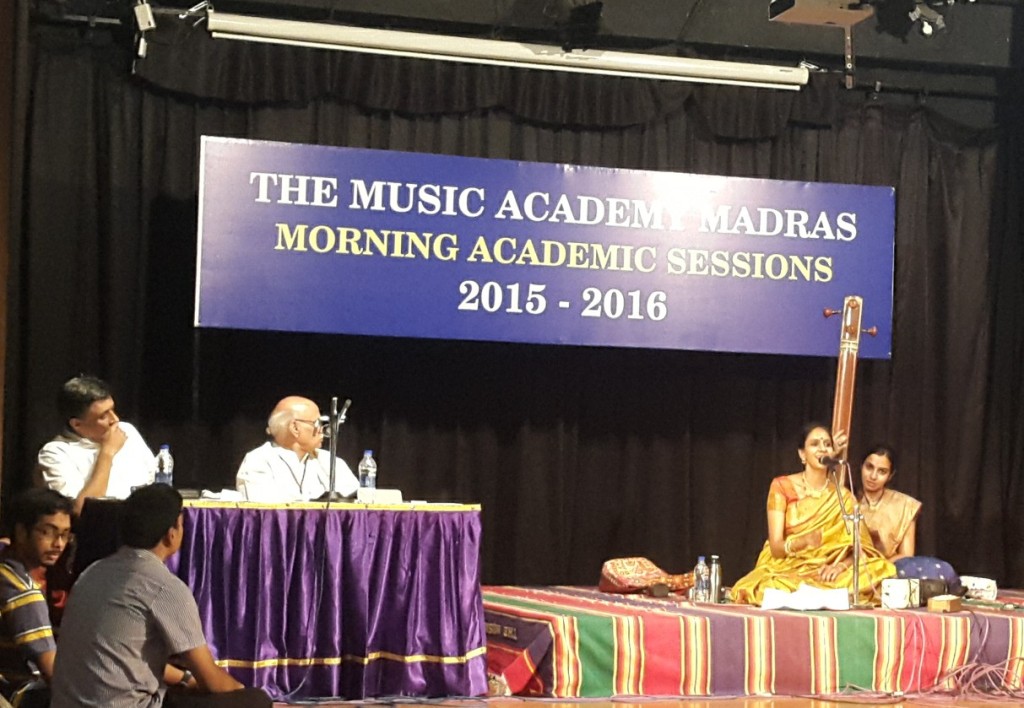
Lec dem by Gayatri – A few perspectives on grahabhedam
Gayatri (of Ranjani Gayatri duo) gave a wonderful lecture demonstration titled “a few perspectives on grahabhedam” today morning at the Music Academy, Chennai. What absolute command over the elements of her art! Totally bowled over by the presentation. Here are some notes from the same: * Grahabhedam is the process…
-
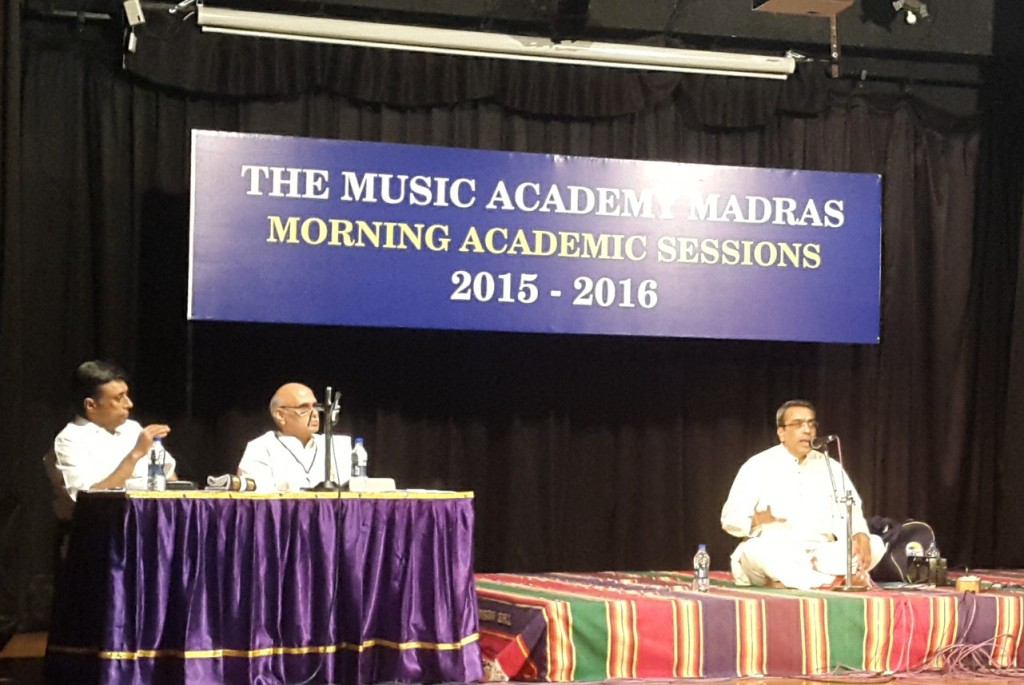
Lec Dem by D. Balakrishna on Pallavis performed by stalwarts of yesteryears
This year’s morning academic sessions at the Music Academy, Chennai started with well known veena vidwan D. Balakrishna’s lecture demonstration on pallavis performed by stalwarts of yesteryears. He demonstrated the following 9 pallavis in 40 minutes and also sang trikAlam, pratilOmam and kalpana swarams for some of them: 1) Pallavi…
-
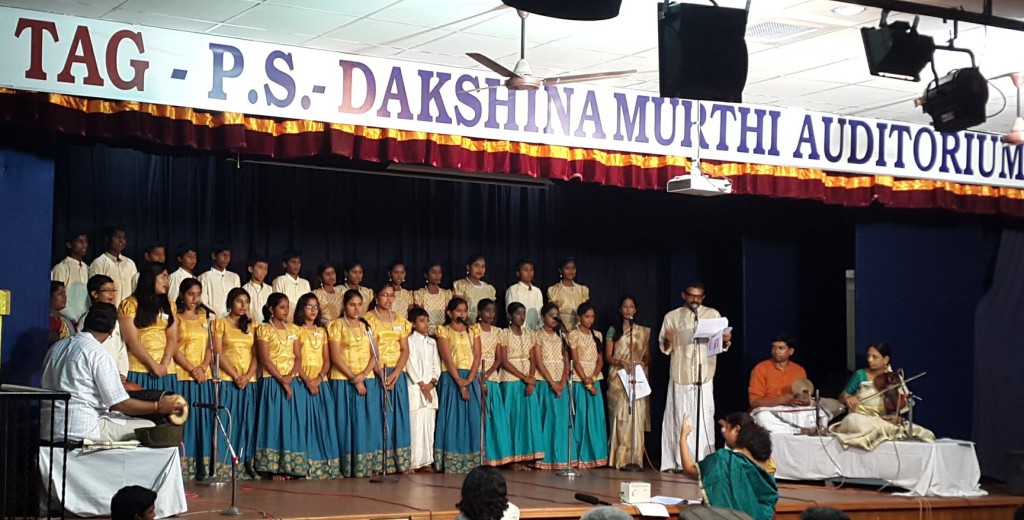
Nottusvaram concert
Venue: TAG Dakshinamurthy Auditorium Vocal: Students of Vidya Vanam, Sargam Choir, Vidhya Raghavan and T.M. Krishna Violin: Dr. R. Hemalatha Mrudangam: Melakaveri K. Balaji Ghatam: N. Guruprasad Khanjira: B.S. Purushotham Conductor: Dr. Sudha Raja List of noTTusvarams sung: 1) shakti sahita gaNapatim – tisra naDai 2) guruguha pada pankajam –…
-

Umayalpuram 80
We are celebrating the 80th birthday of my guru Umayalpuram Dr. K. Sivaraman sir on 5th December 2015 at the Music Academy, Chennai. A plethora of contemporary stars from the performing arts field gather to perform and celebrate this momentous occasion and pay tribute to the living legend. Please “like”…
-
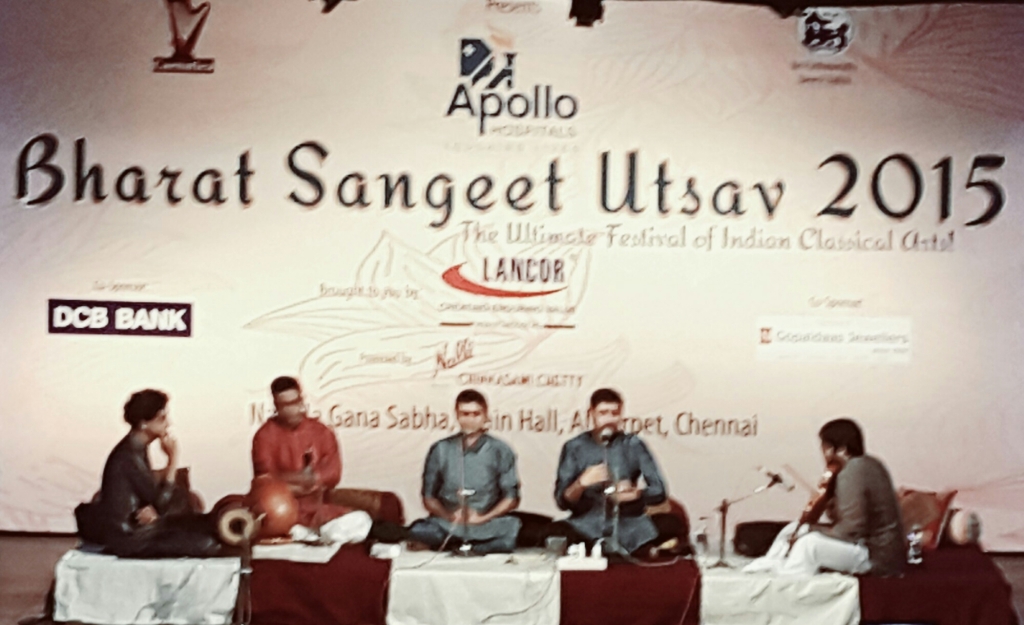
Trichur Brothers for Bharat Sangeet Utsav 2015
Organizers: Carnatica and Shri Parthasarathy Swami Sabha Festival: Bharat Sangeet Utsav 2015 Venue: Sadguru Gnanananda Hall, Narada Gana Sabha Vocal: Trichur Brothers – Srikrishna Mohan and Raam Kumar Mohan Violin: M. Rajeev Mrudangam: Trichur Mohan Ghatam: D.V. Venkatasubramanian List of songs: Missed the first few songs * Anandamritakarshini – amritavarshini…
-
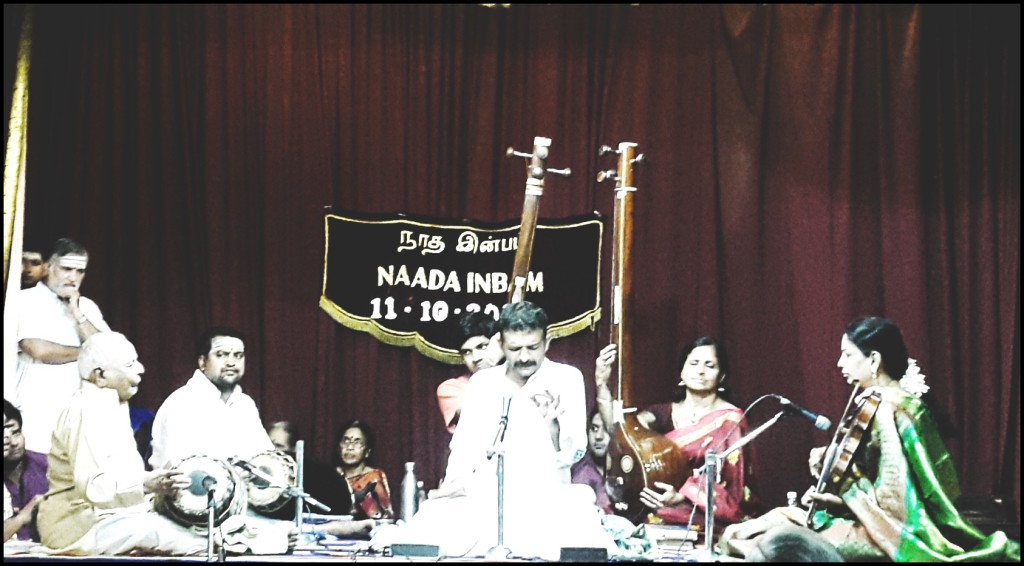
T.M. Krishna for Naada Inbam
Vidwan Sethalapathi Balasubramanian remembrance day concert Organizer: Naada Inbam Venue: Ragasudha Hall, Mylapore, Chennai Vocal: T.M. Krishna Violin: R. Hemalatha Mrudangam: T.K. Murthy and K. Parameswaran List of songs: 1) sarasijanAbha (varNam) – kAmbOji 2) samugAnanilva – kOkilavarALi (OS) 3) dorakuNA – bilahari (ANS) 4) amba paradEvatE – rudrapriyA (AS)…
